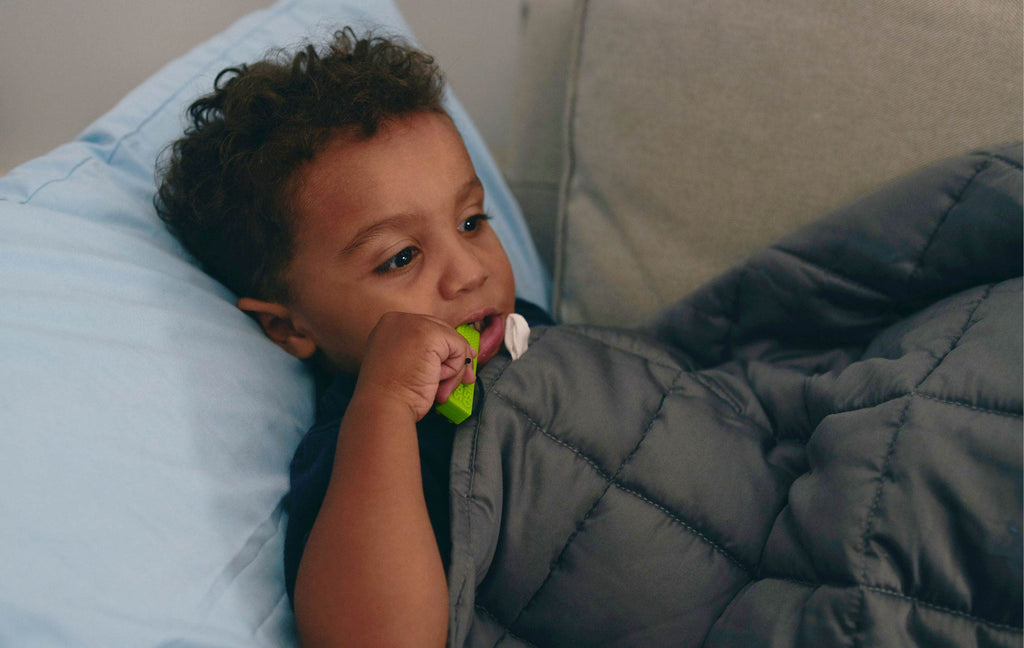Weighted blankets have been around for a while now, helping adults all across the world get a better night's rest.
However occupational therapists have recognized the extra therapeutic benefits of weighted blankets for children diagnosed with sensory processing disorder (SPD).
But before we dive into those benefits, let's explore what is currently known about the sleep problems amongst children with SPD.
How prevalent is restlessness?
Nowadays, finding a good night's rest is a tall order, but can be straight-up impossible for children with SPD. Reportedly, 44 to 86 percent of children along the spectrum struggle to get a good night's rest.
Restlessness can wreak havoc on a child's day to day life, resulting in amplified behavioral issues such as hyperactivity, and aggression. Children who lack sleep struggle with social skills and have a hard time connecting and making friends.
Even worse, sleep-deprived children often exhibit more severe repetitive behaviors to compensate and satisfy their needs. All in all, restlessness can interfere with your child's routine and place them in a disruptive feedback loop. Luckily, weighted blankets are one of the many sensory tools to mitigate this cycle.
So what are weighted blankets?
Weighted blankets are blankets filled with glass beads or pellets to add a bit more heft. The blankets are around 10% of the user's body weight and can mold and form more snuggly to the user.
Weighted blankets are a form of Deep Pressure Therapy (DPT) because the blankets place gentle but firm pressure on one's sensory receptors.
DPT is a tactile and proprioceptive sensory input capable of calming your child's nervous system. In layman's terms, DPT is that comforting, reassuring feeling you get during a motherly hug.
So what benefits do weighted blankets hold?
Anxiety and Restlessness
For parents grappling with autism, you know anxiety and stress go hand in hand with any sensory processing disorder. This anxiety fuels hyperactivity, leaving children agitated and fidgety in their bed.
However, due to the DPT benefits of the blanket, this anxiety and stress can easily be lulled. More so, the extra weight can help cocoon a child, keeping them grounded without overarousal
Sensory Input
The weighted pressure can further proprioceptive input by helping children feel their movements and gain a sense of space. However, this places more importance on ensuring even weight distribution for proper proprioceptive stimulation. Look for blankets with a pocket quilt design such as Senso-minds' blanket, to prevent bunching of pellets and beads.
Simultaneously, the fabric's texture can also provide an extra amount of tactile stimuli to further calm a child. With this said, sensory covers, such as Senso Minds' Minky cover should be used to prevent overstimulation and aggravation of a child's tactile senses.
Improved Sleep
With all the benefits stated, this one should go without saying at this point. However, it is worth mentioning that weighted blanket stimulation induces the release of serotonin and dopamine. These are known as the happy hormones which can result in an increased sense of relaxation and decreased anxiety and overall better sleep for your child.
Conclusion
Weighted blankets are much more than a fad, and in fact, hold several benefits which can truly benefit your child. All in all, the weighted blanket is a worthwhile tool to help your child find the sleep they seek.


Leave a comment: